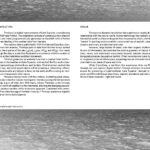About
Timelaps is a dynamic installation that explores our rapidly shifting relationship with the natural world. Human technology has radically transformed the earth’s surface to the point that the presence of any uninhabited nature is startling amid a constructed sea of asphalt, canalized streams and rivers, and damned reservoirs.
However, large bodies of water, with their organic rhythms and illusion of infiniteness, demonstrate the sublime grandeur of nature. Moon tides, waves, and underwater ecosystems bespeak complex physical and biological processes beyond our control. When we encounter Lake Superior, it appears as an infinite plain, expanding to an unknowable horizon. It overwhelms our sense of space and time.
What is left in the experience of sublimity if we filter it through 21st century digital reality? Timelaps attempts to propose an answer by offering a hypermediated Lake Superior: reduced to data points and filtered through algorithms, digitally translated and reduced to its most basic elements – light and sound.
Technical info
Timelaps is a digital representation of Lake Superior, created using Max/MSP and Python. The installation consists of continuous four channel audio and video programmatically generated in Max/MSP with a Python program feeding it live weather data from the lake.
The weather data is published by NOAA’s National Data Buoy Center. Every ten minutes, Timelaps pulls in data from the four buoys spread across the expanse of the lake (45006, 45001, KP53, and KP59). Max reads through the data at a rate that fluctuates in accordance with the number of visitors at the installation and their movement.
Timelaps generates an ambient tune that is created from the fluctuations in the weather on Lake Superior, with each of the four audio channels representing a distinct buoy and its data. Wind direction controls the song’s key, and wind speed adjusts a filter (creating a ‘whooshing’ effect); air pressure adds and adjusts a delay on the audio and fluctuating air temperature change each note’s decay.
The piece moves slowly with few visitors, illustrating quick changes in a day’s weather (clouds moving over the lake causing the temperature to drop, a gust of wind, etc). With many visitors, Timelaps cycles through weeks’ worth of weather in a few moments, allowing the changing seasons’ more gradual weather shifts to become apparent. Combined with continuous live video footage of the lake’s horizon,* Timelaps presents a digitally rendered visit to Lake Superior.
Preliminary sound tests 1; sound test 2.
* Not implemented in this version.
